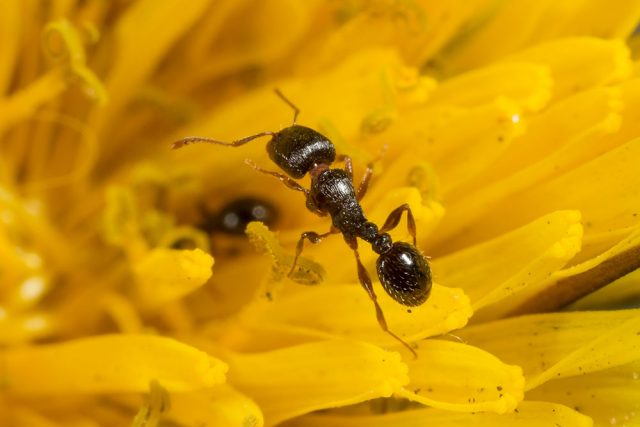Pavement ants get their name from a habit of creating colony nests in cracks or under the pavement. They will also create nests under sidewalks and driveways. This specific type of ant was brought in by the early settlers who came to North America from Europe. These ants are found in the eastern part of the United States, but also can be found in locations on the west coast.
Pavement Ant Identity
These ants are brown to black and about 1/16-1/8 inch in length. Legs are lighter in color than the body. All workers are the same size. If you can look very closely at this ant you will see the head and thorax (middle part of the body) have furrows or grooves. They will also have two nodes (knots) at their waist. If you need assistance in identifying a certain type of ant, use our pest identifier tool.
Colony Lifestyle
Pavement ant colonies can have up to 4,000 ants with multiple queens. You might see winged reproductive (swarming ants) outdoors in June or July but colonies nesting indoors may emerge during the winter.
Inside pavement ants will occasionally nest in walls, in insulation, and under floors. These nests are usually near masonry walls of the foundation near a heat source. they may follow utility pipes into the structure. Inside they will feed on meats, cheese, honey, bread, and grease.
Outside pavement ants will nest under rocks, cracks in pavement and concrete drives and walks and next to foundations. You will generally see dirt piled up around the entry to nests in these exterior areas. Outside these ants feed on live and dead insects, seeds, plant sap and honeydew, a sweet excretion produced by aphid and scale insects feed on plants. These ants will tend and protect the aphids like cattle.

Interest facts about pavement ants
- These ants were probably brought over from Europe with the first settlers
- These ants like to create nests in cracks in pavement areas
- This ant has grooves (furrows) on its head and thorax
Pavement ant control
The most important and first step is to correctly identify the ant. Inspection of the property is next to determine the extent of the infestation both indoors and on the exterior. Then a treatment process is determined. It is suggested to contact a professional pest management company to create a control program.

